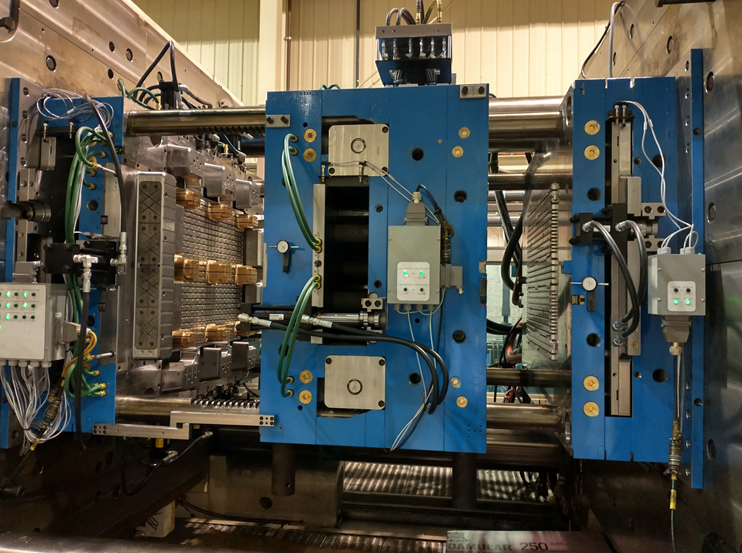Creating an English Mold for Plastic Bottle Crates
Plastic bottle crates have become an essential part of our daily lives, providing a convenient and efficient way to transport and store bottles. The demand for these crates has been steadily increasing, and manufacturers are constantly looking for ways to improve their production processes. One key aspect of crate production is the mold used to shape the plastic. In this article, we will explore the process of creating an English mold for plastic bottle crates.
The first step in creating an English mold is designing the mold cavity. The mold cavity is a hollow space that determines the final shape and size of the crate. This is done using computer-aided design (CAD) software, which allows engineers to create a virtual representation of the mold. The design takes into account factors such as the number of bottles the crate can hold, the dimensions of the bottles, and any specific requirements from the client.
Once the mold cavity design is finalized, the next step is to create a pattern. The pattern is a replica of the mold cavity and is used to create the mold itself. Traditionally, patterns were made by skilled craftsmen using wood or metal. However, with advancements in technology, patterns can now be created using 3D printing or computer numerical control (CNC) machining. This allows for greater precision and faster turnaround times.
After the pattern is created, it is used to create the mold itself. The mold is made from a durable material such as steel or aluminum. The pattern is placed inside a mold box, and liquid or powdered molding material is poured around it. The material is then allowed to solidify, creating a replica of the pattern inside the mold box. This process is known as casting.
Once the casting is complete, the mold is removed from the mold box, and any excess material is trimmed away. The mold is then cleaned and polished to ensure a smooth surface finish. This is important because any imperfections or rough surfaces can affect the quality of the final product.
The next step is to test the mold. A small batch of plastic is injected into the mold cavity, and the crate is formed. This test run allows engineers to check for any issues such as warping, flashing, or uneven filling. If any issues are identified, adjustments can be made to the mold cavity design or the molding process.

Once the mold has passed the testing phase, it is ready for mass production. Plastic pellets are melted and injected into the mold cavity, where they take the shape of the crate. The mold is then cooled, and the plastic solidifies, allowing the crate to be ejected from the mold. This process is repeated continuously, allowing for the production of large quantities of plastic bottle crates.
Creating an English mold for plastic bottle crates requires a combination of engineering expertise and advanced manufacturing technology. By carefully designing the mold cavity, creating an accurate pattern, and conducting thorough testing, manufacturers can ensure the production of high-quality crates that meet the demands of the market. With the increasing demand for plastic bottle crates, creating an efficient and reliable mold is crucial for manufacturers to stay competitive in the industry.
-
Creating a Top-Notch Plastic Big Crate Mould: Mastering the Art of Precision and Durability
2023-7-4
In the world of plastic manufacturing, the creation of high-quality and durable products is a constant pursuit. One such...
ເບິ່ງລາຍລະອຽດ -
Revolutionizing Production with Plastic Injection Molding
2023-5-24
Plastic injection molding has been revolutionizing the production industry for several decades. This manufacturing proce...
ເບິ່ງລາຍລະອຽດ -
Medical Mold has multiple requirements for your business
2023-5-12
Introduction Medical mold is a vital tool in the medical industry as it plays a critical role in the manufacturing of me...
ເບິ່ງລາຍລະອຽດ -
ການສ້າງແມ່ພິມສີດພາດສະຕິກແບບກຳນົດເອງ
2023-4-25
Introduction: Plastic injection molding is a widely-used manufacturing process that involves the creation of custom plas...
ເບິ່ງລາຍລະອຽດ -
Innovative design, plastic large turnover box mold is more efficient
2024-3-19
Plastic large turnover box mold, this thing sounds very professional, but in fact it is a powerful assistant in our indu...
ເບິ່ງລາຍລະອຽດ -
China plastic chair injection mould
2023-4-8
A plastic chair injection mold is a tool used in the plastic injection molding process to produce plastic chairs. The mo...
ເບິ່ງລາຍລະອຽດ







